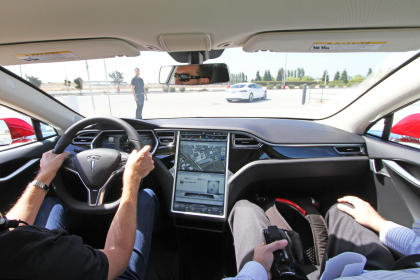Study: The typeface in your car could be dangerous
When you're in your car, you're supposed to be driving, not reading. But dangerous distractions lurk right on the dashboard, starting with the typeface of onboard navigations systems, and that typeface may be dangerous.

That's what a new study from MIT AgeLab and Monotype is suggesting. As surfaced by Gizmodo, researchers tested two different typefaces on dashboard navigation systems (which require drivers to read visual menus, touch the screen with their selections, read maps, and so on) and found that a font that is harder to read can cause higher driver distraction, which could lead to accidents.
In the study, one commonly used typeface in cars -- what the researchers called "square grotesque" -- faced off against the "humanist" font. The white paper notes that, for male drivers aged 36-75, "a 'humanist' typeface resulted in a 10.6% lower visual demand as measured by total glance time as compared to the 'square grotesque' typeface. Total response time and number of glances required to complete a response showed similar patterns."
As a researcher points out, the "difference in glance time represents approximately 50 feet in distance when traveling at U.S. highway speed."
The study did not show the same results for females, however. The research notes that the "impact of different typeface style was either more modest or not apparent for women."
How could lettering make such a difference? The study breaks down the look between the two fonts, and explains why the humanist typeface works: More space inside and between each letter, more recognizable letter shapes, varied horizontal proportions all increase readability.

In contrast, the "square grotesque" font letters have tight letter spacing, tend to blur together, and use "highly assimilated letterforms," which increase ambiguity.
The white paper states, "This research suggests that optimizing typeface characteristics may be viewed as a simple and effective method of providing a significant reduction in interface demand and associated distractions."

 Yahoo Autos
Yahoo Autos 
